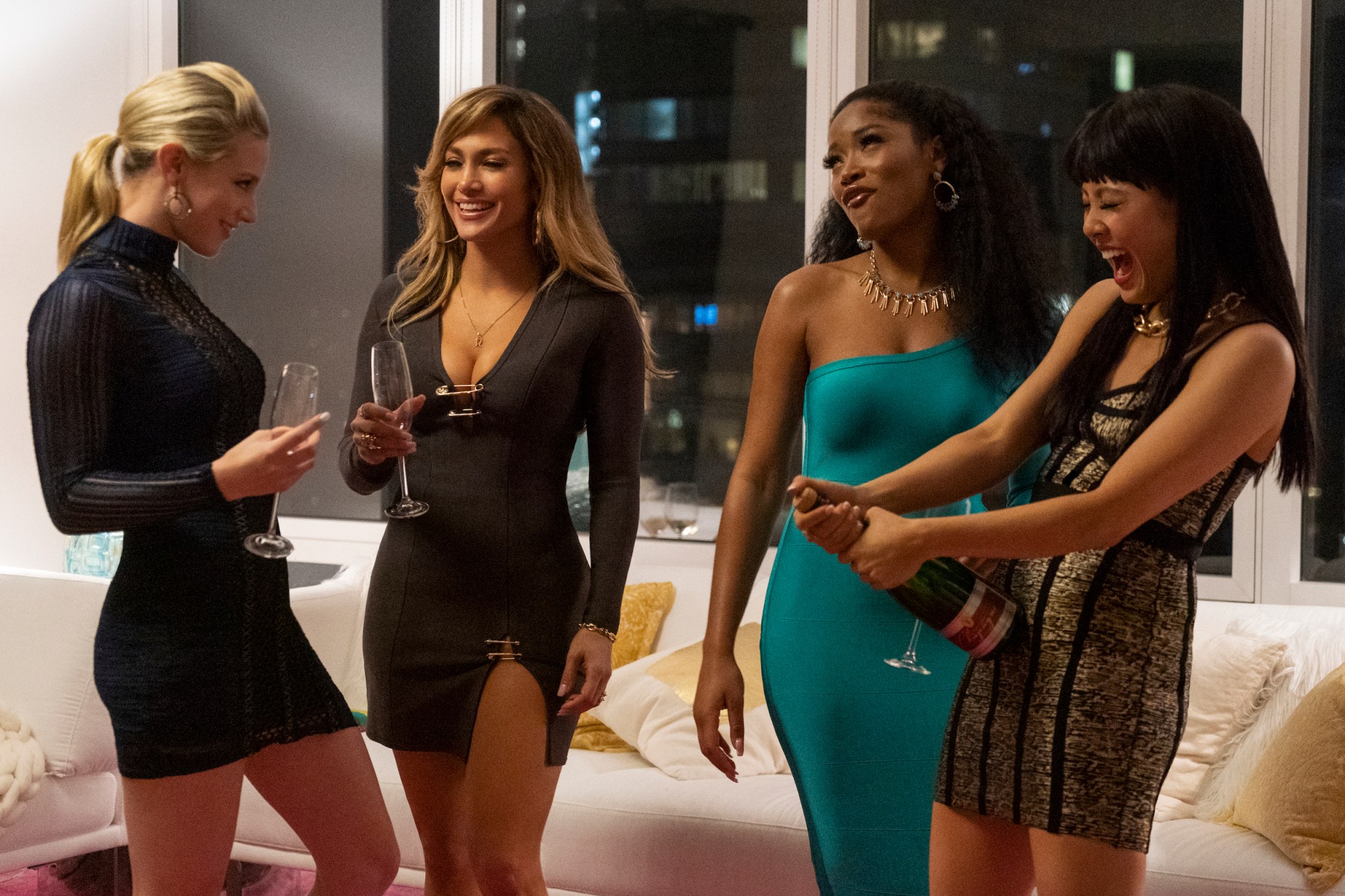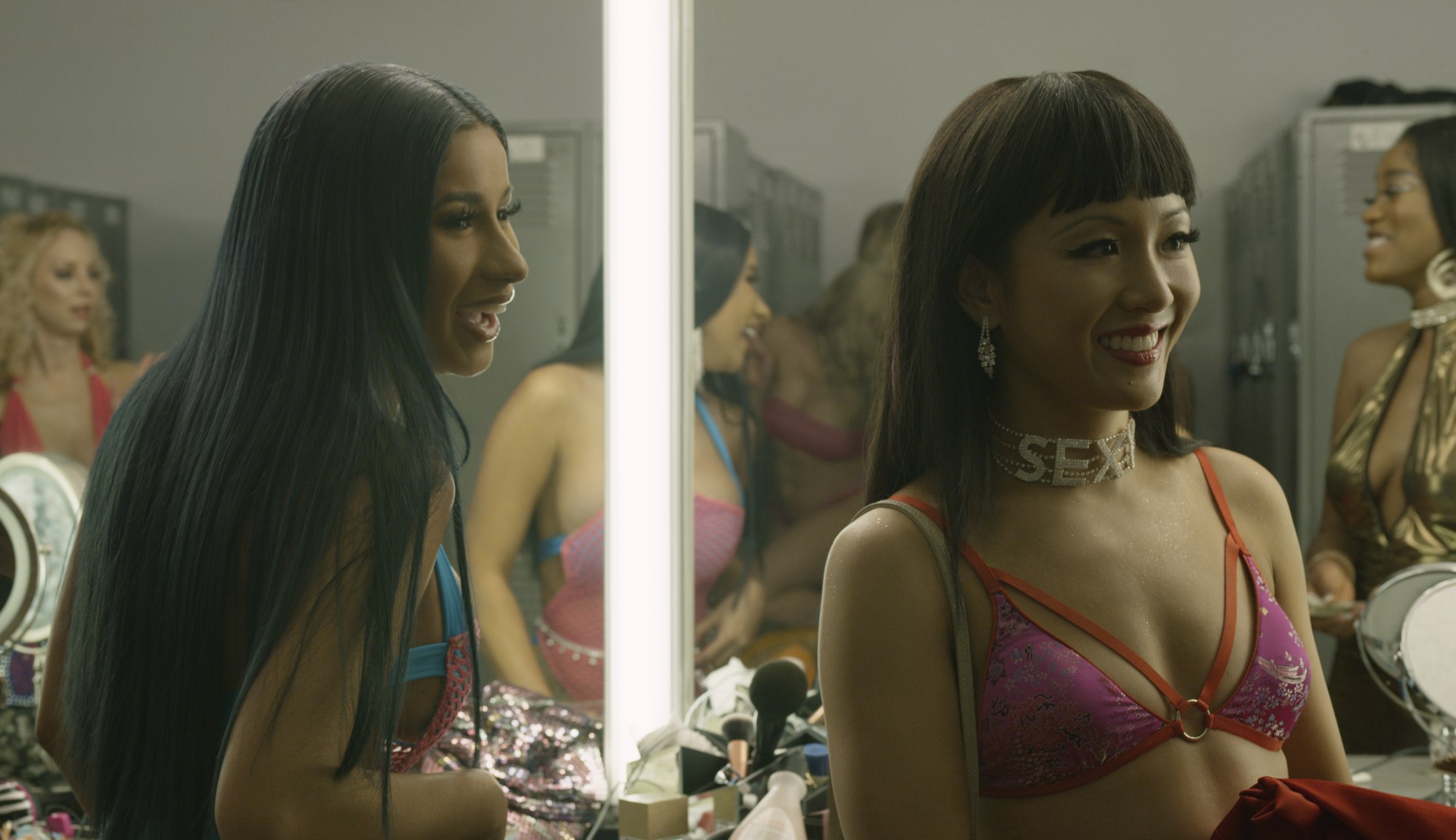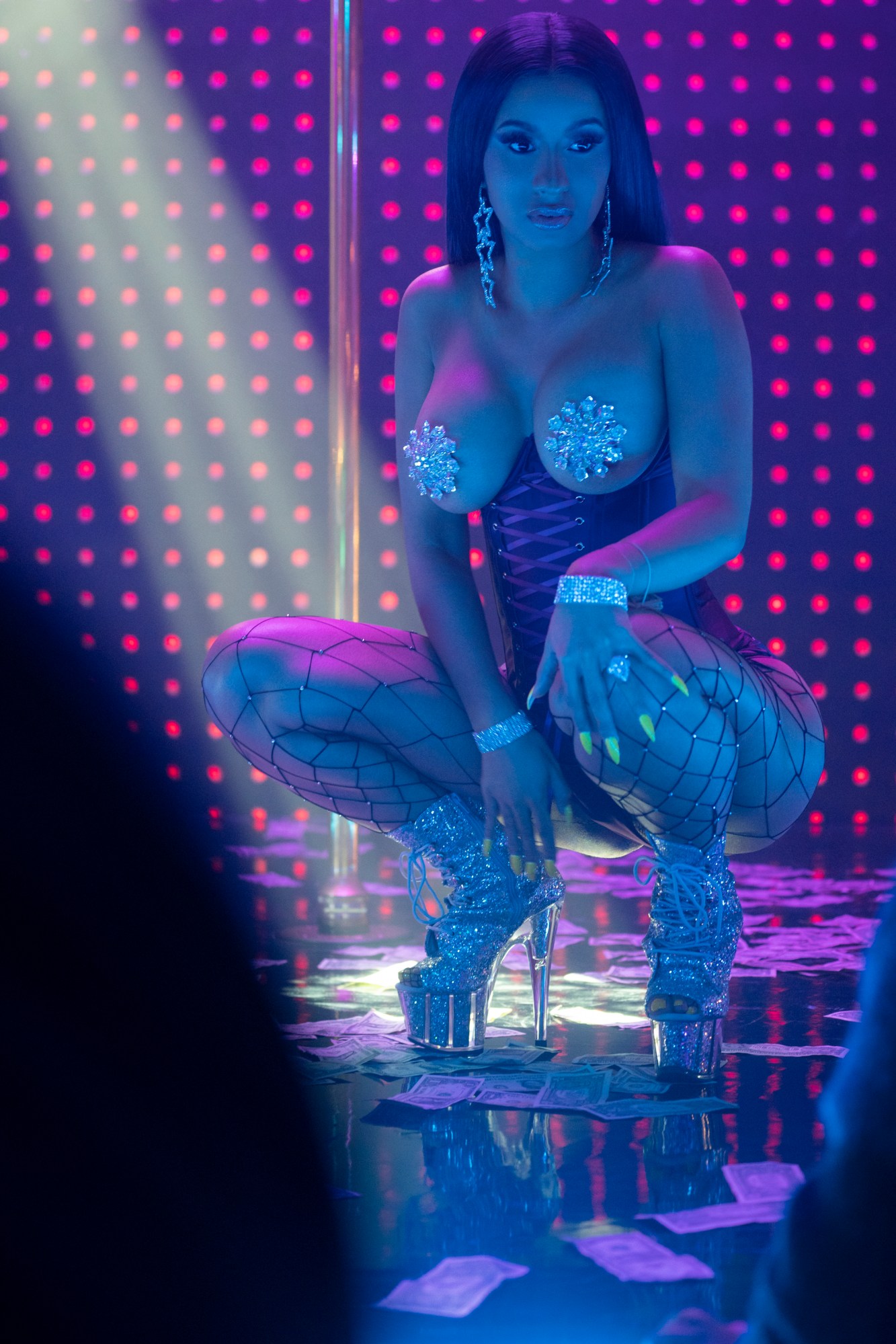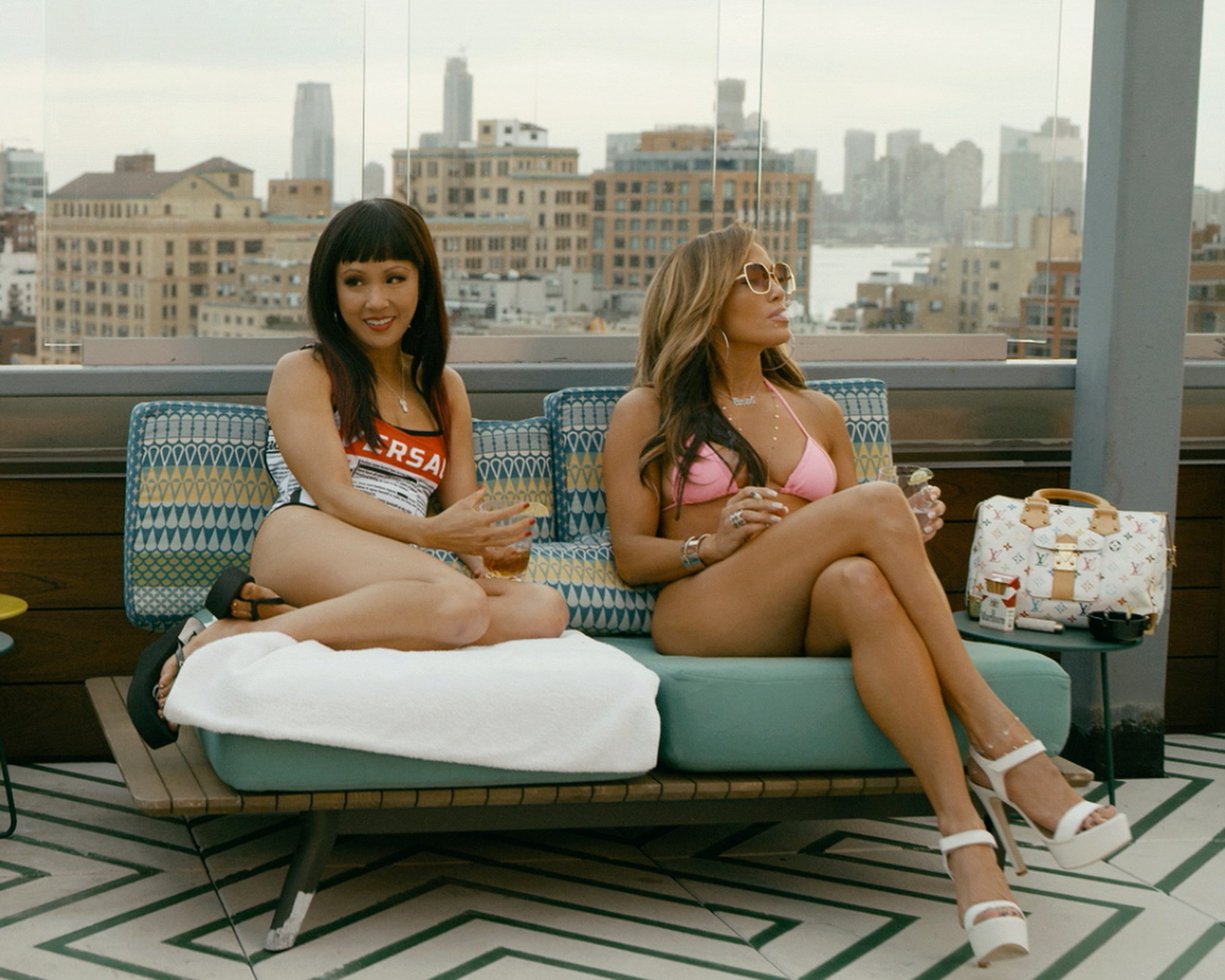In Hustlers, we get to see Cardi B give Jennifer Lopez a lap dance, Usher strut through a strip club to the tune of his mid-00s bop “Love In This Club,” and Lizzo bust out her flute backstage. But the film is so much more than a collection of memeable, memorable moments. It’s a deeply empathetic, complex, and funny tale of female friendship and rivalry.
Lorene Scafaria wrote and directed the film based on an article by Jessica Pressler for New York Magazine, about a gang of strippers who con rich men out of money. She did so in a way that expertly weaves together themes of gender and the economy, capitalism and corruption, and the financial collapse of 2008, ensuring a delicate balance between grit and glamour.
Lopez, Constance Wu, Keke Palmer, and Lili Reinhart play characters based on real women, so the pressure was on to get the tone just right. “For me, writing has always been an exercise in empathy,” Scafaria says, on the phone from Los Angeles. “So that was my approach to it, to try to read between the lines of what Jessica wrote.”

The film’s flawless re-creations of 00s makeup and costumes will make you pine for those simpler times. Countless bodycon bandage dresses, diamanté-embellished T-shirts, oversized Louis Vuitton tote bags and even a velour Juicy Couture tracksuit make appearances, creating a highly accurate representation of the era’s looks. And with Julia Stiles playing Pressler, there’s an added layer of nostalgia. (Her breakout film 10 Things I Hate About You only just preceded the era in which Hustlers is set).
“I was very adamant about it being and feeling like the period piece that it was, even though it was obviously very recent history,” Scafaria says. The characters’ clothing and makeup reflect the wildly changing times, as the film progresses from plentiful 2007 through the crippling 2008 financial crisis and beyond. As their lives become harder and their working conditions harsher, so does their makeup – lip liner is lacquered on thicker, eye shadow becomes darker. “It was important to show that pre-crash, post-crash time, with the club in those two different states,” Scafaria explains. “And really, every earring tells a story, so we wanted to get it down to every little detail.”
Costume designer Mitchell Travers pulled a “staggering” amount of clothing for the film, not only to ensure they covered all of the iconic styles, but also to ensure the actors were at ease with their options. “We wanted to leave the women with enough choice to be able to say what clothes they were comfortable in, and what they felt good in.” Ultimately, Cardi B seemed right at home in a phenomenal cupless corset, as did Lopez in a silver strappy bodysuit.

Scafaria knew very early on that she had to have Lopez in the film. “The character of Ramona fits her like a glove, but kind of like a glove she’s never really put on before.” When we first see Ramona she’s performing a show-stopping routine to Fiona Apple’s “Criminal,” and afterwards she sprawls on the roof of the club to smoke a cigarette. She’s shrouded in a voluminous chinchilla coat that looks like it could have been plucked straight from one of her music videos. It’s such an iconic sight that the audience in the theater actually gasps.
In another nod to the era, Lopez dons a facial piercing in the form of a diamond below her lip. But she’s not the only one to go all in – Wu embraces perhaps the most heinous trend of the time: over-plucked eyebrows. “I was really proud of Constance for doing the thing that I hoped for, which was she tweezed her eyebrows straight into 2007!” Scafaria laughs. “I mean, my eyebrows haven’t grown back since the 90s, so I’ve not been able to keep up with the times. But over-plucked eyebrows were such a big part of it.”
Tales of grifters and con artists have been grabbing our attention lately, and it’s not just because of their bad hair and dodgy outfits. We crave stories of complex, wily women because we’ve been denied them for so long. “It’s still hard to get movies made about women doing bad things, and I think the pressure that we put on women in daily life to be perfect extends to female characters as well,” Scafaria says. “We’re interested in seeing women’s stories no matter what they are, because so few have been told on an epic scale.”

This is why Scafaria was driven to make Hustlers – because it’s unexpected. “I feel like when people think of women’s stories, they think of small stories. They think of motherhood as a small story, and it’s not! And they think of our daily lives as small stories. So, I was really excited to tell an epic story.”
“People aren’t used to seeing women trying to get ahead in that way. I think we’re often seen spending and shopping, but not really earning and providing. We’re supposed to be egoless and righteous,” she laughs. “I think there’s something really exciting about seeing women on screen letting loose in ways that maybe most people never would and seeing the complexities of it.”
Scafaria hopes that Hustlers will have an impact beyond the theater in reducing the stigma around strippers and sex workers. She hopes it encourages more people to join the movement to repeal FOSTA-SESTA, a bill passed into law last year that undermines internet freedoms and threatens the safety and livelihoods of sex workers.

“It’s wild to think that we exist in this incredibly broken value system, and we judge women for existing and trying to thrive within that value system. I don’t understand how we can pass judgement and have such a large stigma around a group of people who are just trying to make ends meet in a world that’s told them that this is their greatest value,” Scafaria says. “These new laws are there to supposedly save them from their work, but what they’re really doing is taking them away from their means of income.”
“Obviously I hope people are entertained and really enjoy themselves watching the movie, but if they can walk away with any kind of greater understanding of strippers and sex workers as workers, then that would honestly be my greatest joy,” Scafaria adds. That would be most meaningful to me.”

